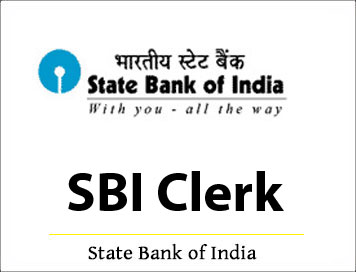NEW! E-BOOKS (PDF)
NEW! SBI PO Study Notes | IBPS PO Exam
Model Questions for SBI CLERK Exam : GENERAL ENGLISH Set-07
Model Questions for SBI CLERK Exam : GENERAL ENGLISH Set-07
Directions: Read the following passage carefully and answer the questions given below it. Certain words/phrases are printed in bold to help you to locate them while answering some of the questions.
The genesis of service tax emanates from the ongoing structural
transformation of the Indian economy, whereby presently more than one-half of
GDP originates from the services sector. Despite the growing presence of the
services sector in the Indian economy, it remained out of the tax net prior to
1994-95, leading to a steady deterioration in tax-GDP ratio. The service tax was
introduced in 1994-95 on a select category of services at a low rate of five per
cent. While the service tax rate and the coverage of services being taxed have
increased ever since, the combined tax-GDP ratio of the Centre and States,
nevertheless, deteriorated from 16.4 per cent in 1985-86 to 14.1 per cent in
1999-2000. It may be noted that between 1990-91 and 1998-99, the share of
industrial sector in GDP dropped by 6.4 percentage points whereas almost 64 per
cent of the tax revenue was generated by indirect taxes for which industrial
sector continues-to be the principal tax base. On the other hand, during the
same period, the share of services sector in GDP has increased by 10 percentage
points and this sector has still remained poorly taxed.
The rationale for service tax, therefore lies riot only in arresting the falling
tax-GDP ratio but also in ipso facto improving a locative efficiency in the
economy as well as promoting equity. Against this back-drop, the service tax
needs to be designed taking into account the fact that (i) the share of services
in GDP is expanding; (ii) failure to tax services distorts consumer choices and
encourages spending on services at the expense of goods; (iii) untaxed service
traders are unable to claim value added tax (VAT) on service inputs, which
encourages businesses to develop in-house services, creating further
distortions; and (iv) most’ services that are likely to become taxable are
positively correlated with expenditure of high income households and, therefore,
service tax improves equity.
In the Indian context taxation of services assumes importance in the wake of the
need for improving the revenue system, ensuring a measure of neutrality in
taxation between goods and services and eventually helping to evolve: an
efficient system of domestic trade taxes, both at the Central and the State
levels.
The coverage of services under tax net has been progressively widened over the
years. With effect of the Finance Act, 2004, 71 service are presently
contributing to the service tax collections. The services tax is applicable to
ll parts ofIndia except the State of Jammu and Kashmir and is leviable on the
gross amount charged by the service provider from the client. The rate of
service tax was increased from 5 per cent since September 10,2004. With the
increase in tax rate and base of service tax, the collections from the service
tax have shown a steady rise from Rs. 410 crores in 1994-95 tc. Rs. 8,300 crores
in 2003-04; however, they accounted for only 4.4 per cent of the total tax
receipts of the Centre (0.3 percent of GDP) in 2003-04. Service’ tax is
envisaged as the tax of the future. The inclusion of all value added services in
the tax net would yield a larger amount of revenue and make the existing tax
structure more elastic. Once the service sector is adequately covered under tax
net, the buoyant services sector will enable the reversal of declining trend in
tax buoyancy. Besides raising the revenue buoyancy, appropriate taxation of
services sector would also provide equity, efficiency and consistency in the tax
administration as well as neutrality for various economic activities.
Integration of services sector to the tax net would be the prelude to the
introduction of a full-fledged VAT system.
Directions: Choose the word/group of words which is most nearly the SAME in meaning as the word given in bold as given in the passage.
1. NET
(a) Actual amount
(b) Amount after tax
(c) Governance
(d) Coverage
(e) Mesh
2. ENVISAGE
(a) Implement
(b) Unreliable
(c) Endure
(d) Untenable
(e) Expect
Directions: Choose the word/ group of words which is most OPPOSITE in meaning of the word given in bold as given in the passage.
3. PROGRESSIVELY
(a) Gradually
(b) Abruptly
(c) Occasionally
(d) Narrowly
(e) Ineffectively
4. ELASTIC
(a) Flexible
(b) Unreliable
(c) Faulty
(d) Untenable
(e) Rigid
Directions: Which of the phrases (a), (b), (c) and (d) given below should replace the phrase given in bold in the following sentence to make the sentence grammatically meaningful and correct. If the sentence is correct as it is and no correction is required, mark (e) as the answer.
5. Take into account the suggestions of the panel, a revised draft report is being placed in the public domain.
(a) Taken into account
(b) Taking an account
(c) Taking into account
(d) Accounting for
(e) No correction required

